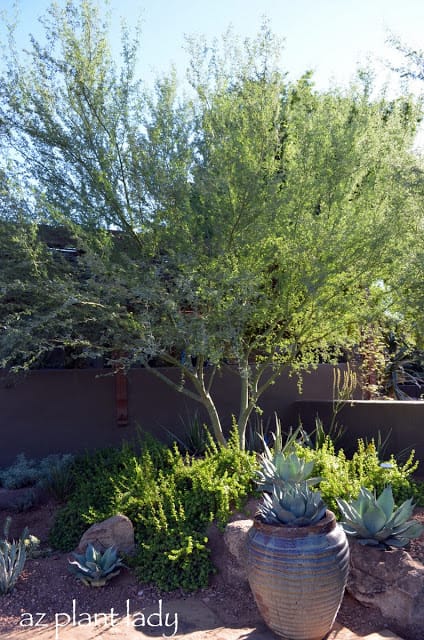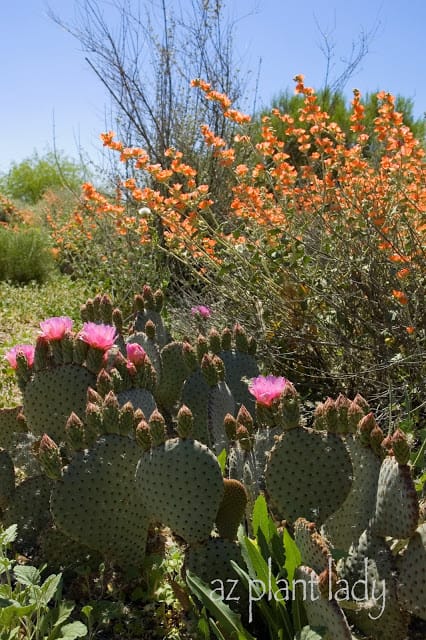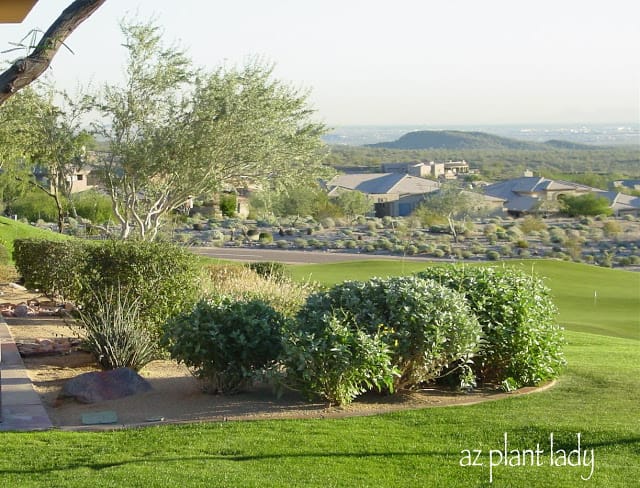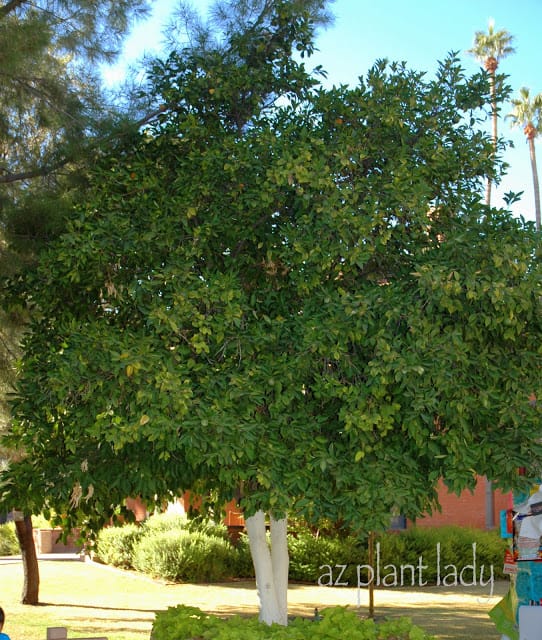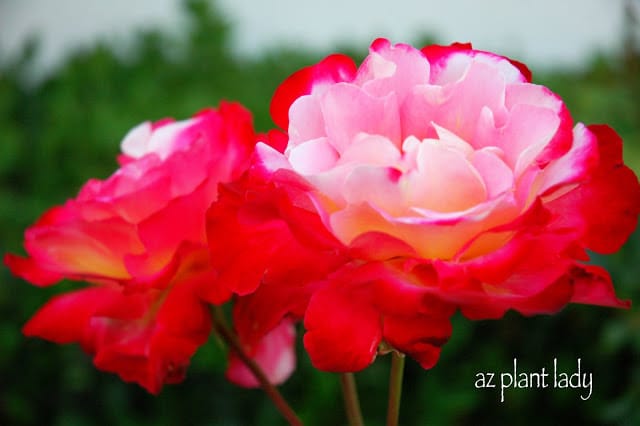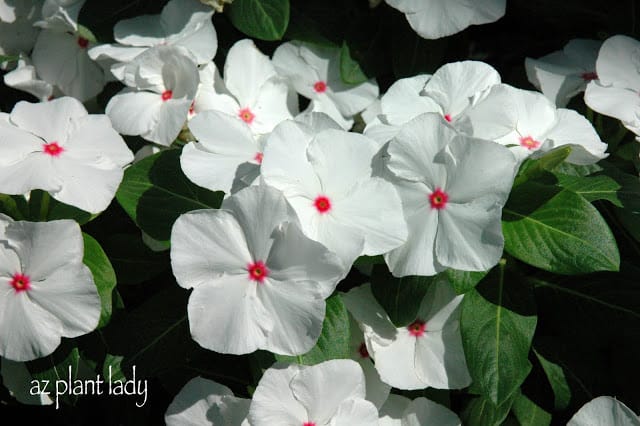Where do your plants get their water from?
If you are like most people who live in the desert Southwest, your answer may be drip irrigation, a rain barrel and/or rainfall.
But, what if you didn’t have drip irrigation or don’t want to install one? Is it possible to have an attractive, established landscape that can survive on only regular rainfall in the desert?
The answer is yes!
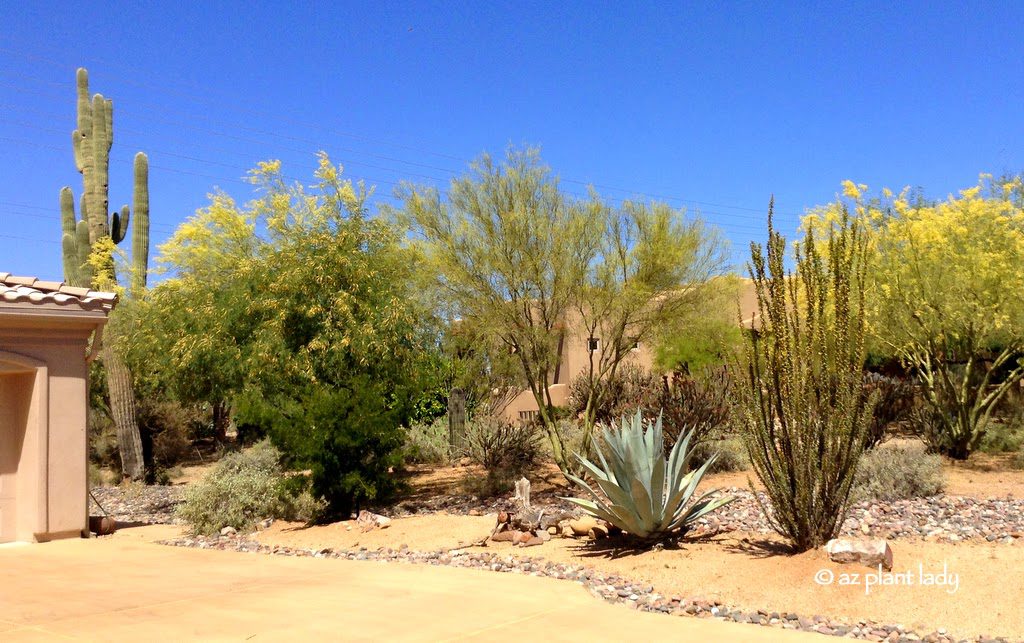
Drought Tolerant Landscape Irrigated by Rain
Last week, I was asked to help a client with her landscape.
Now unlike most of my clients, she had no irrigation. Any new plants had to be able to survive on the average 9 inches of rain that fall each year.
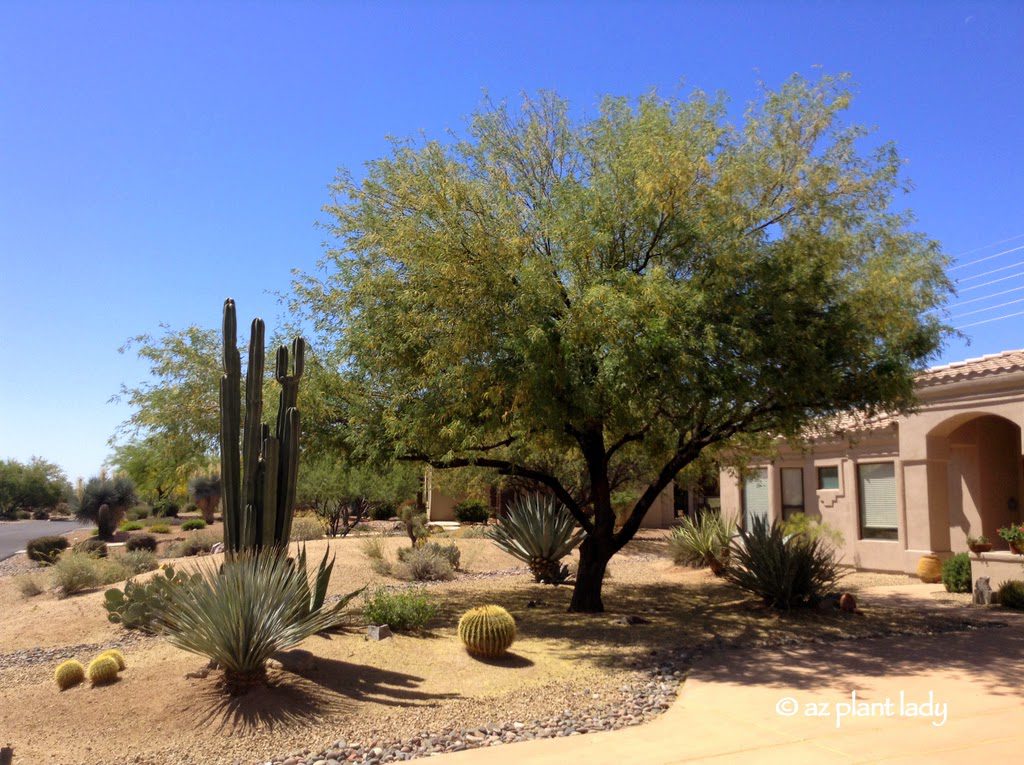
Drought Tolerant Landscape Irrigated by Rain
Her existing landscape receives no supplemental irrigation and is filled with succulent plants such as agave, desert spoon, golden barrel cacti, mesquite, Mexican fence post cacti, ocotillo, prickly pear and red yucca.
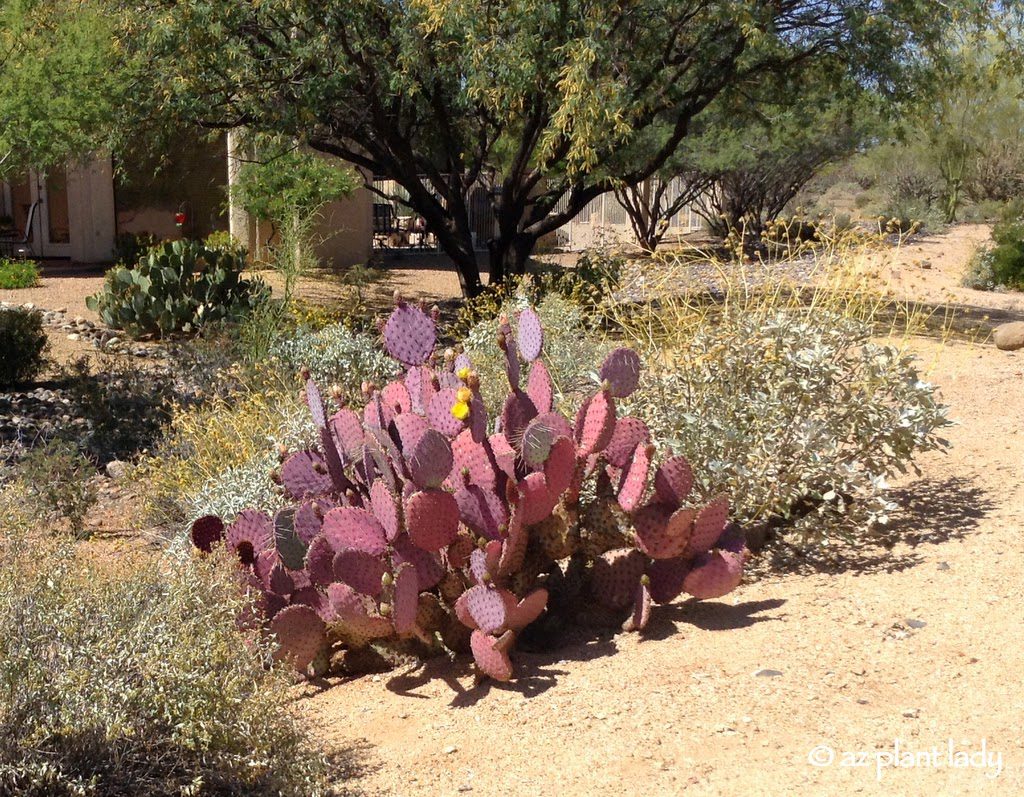
Native desert shrubs like brittlebush, bursage and creosote filled out the rest of the landscape.
My client was happy with how her front yard looked, but wanted some help with the backyard.
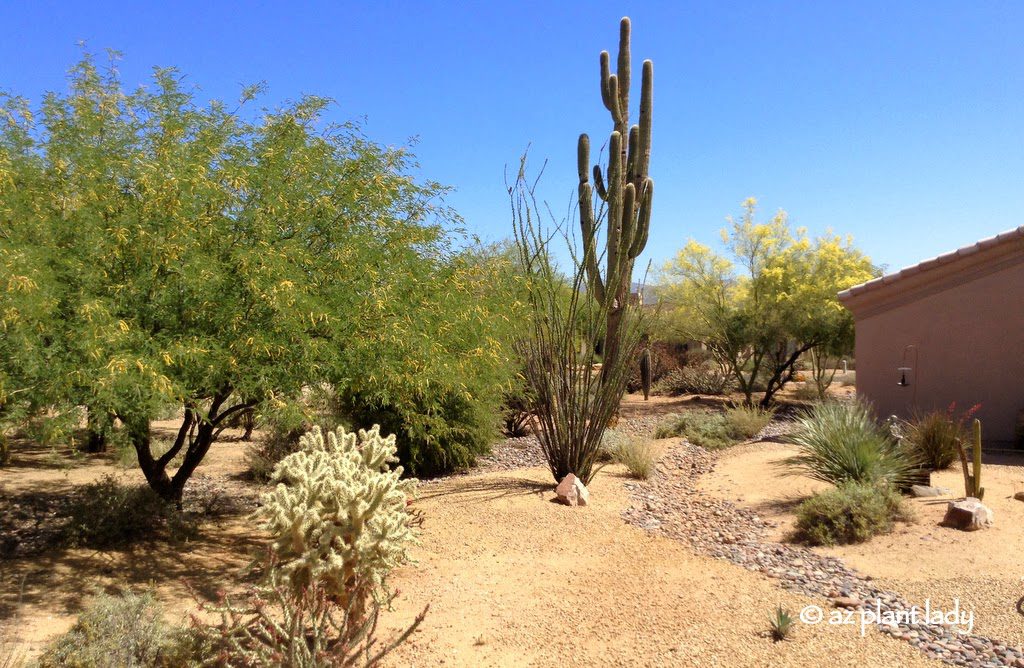
The backyard was filled with cholla and saguaro.
My goal was to add a few of the client’s favorite desert plants as well as include a few more for a welcome splash of green and colorful flowers.
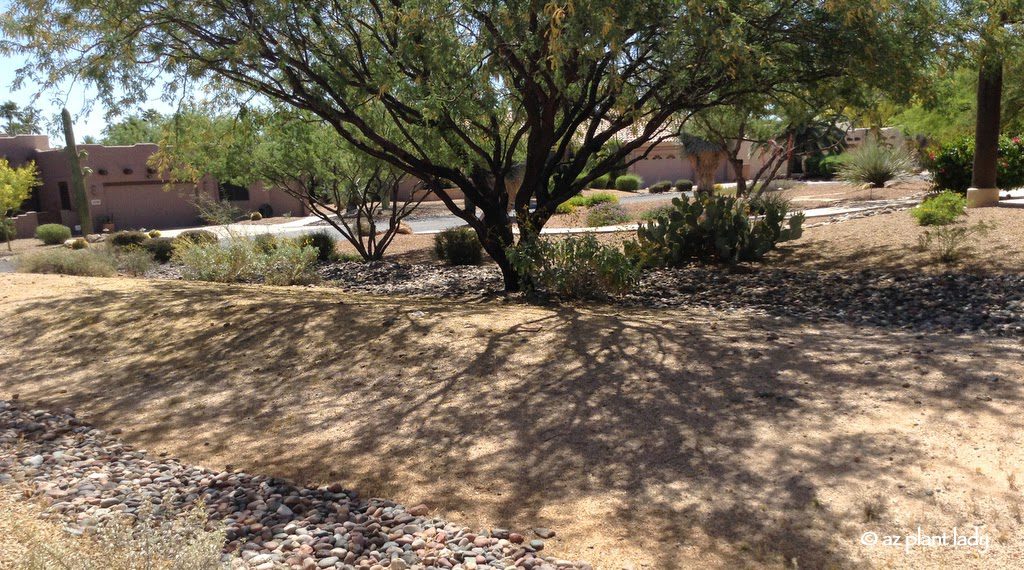
Drought Tolerant Landscape Irrigated by Rain
I added some Argentine giant(Echinopsis candicans) cacti, which she loved.
In addition, I also included chuparosa(Justicia californica) in areas that received filtered shade where their blooms will add welcome color. Pink fairy duster(Calliandra eriophylla) was suggested for bare areas, intermixed with brittlebush(Encelia farinosa) for late winter to early spring color.
I also recommended that the volunteers from several agave growing in front including cuttings from her prickly pear be utilized in the backyard as well.
All of these plants can survive on regular rainfall once established.
Note the two underlined words above, which are important. If rainfall amounts are lower than average, plants may need supplemental irrigation.
In addition, many of the new plants will need irrigation until they become established and grow a sufficient root system – this can take a year or even two.
It should also be stated at this point, that fall is the best time to plant so that the new plants have time to establish a good root system before the heat arrives the following year.
So, how often do you need to water new plants until they become established?
If planted in fall, water native, desert shrubs deeply (1 1/2 ft.) every week for the first month. Then every 2 weeks for the rest of the first year.
For the cacti and succulents, water once a month for the first year, skipping the winter months.
Thereafter, both types of plants, including other desert natives, should be able to survive on natural rainfall.
If rainfall is absent, water once a month. So, you may be wondering what is the best way to water without a drip irrigation system. Here is an easy way to water your plants by creating a DIY drip irrigation system.
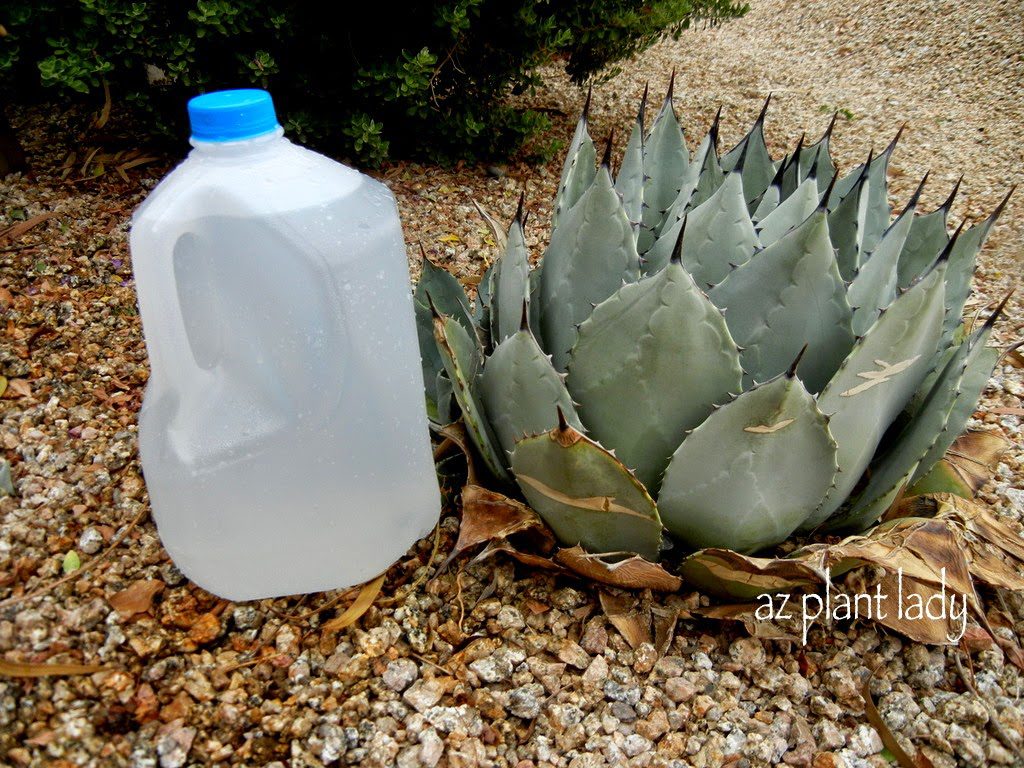
Yes, that is a milk jug. You can use them to create portable drip irrigation that you can move from plant to plant. The water is released slowly allowing it to permeate deep into the soil.
You can learn how to make your own here.


